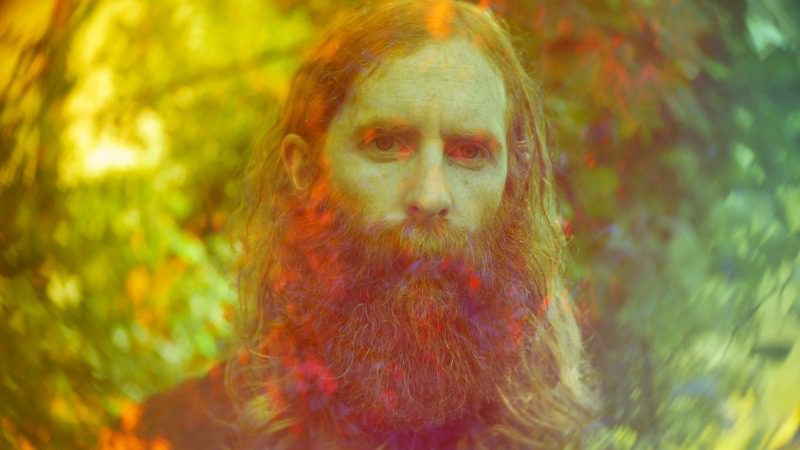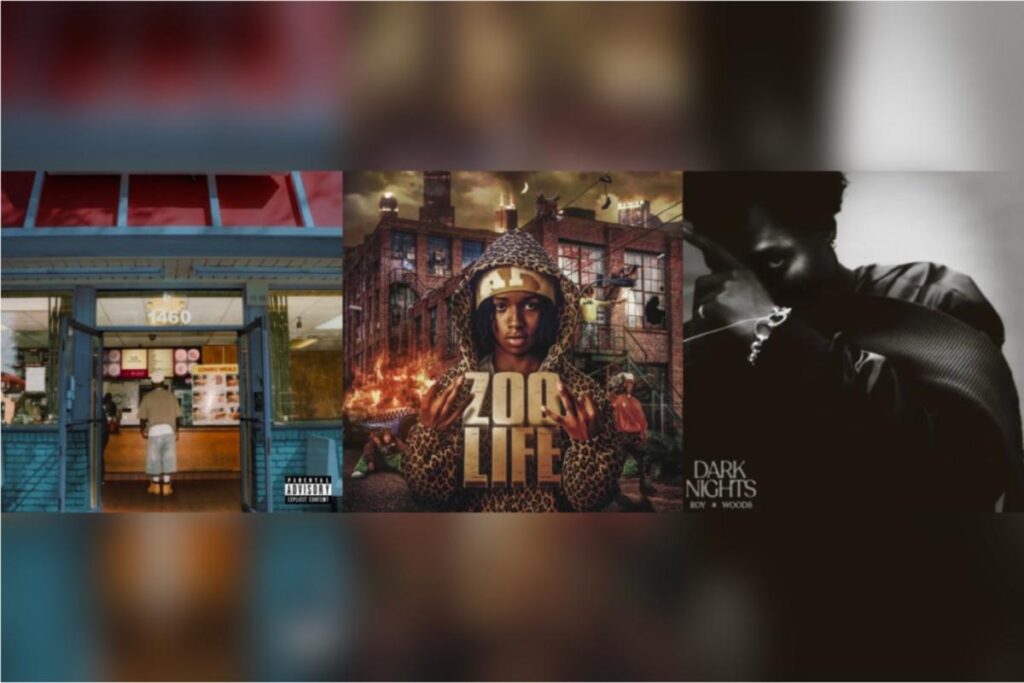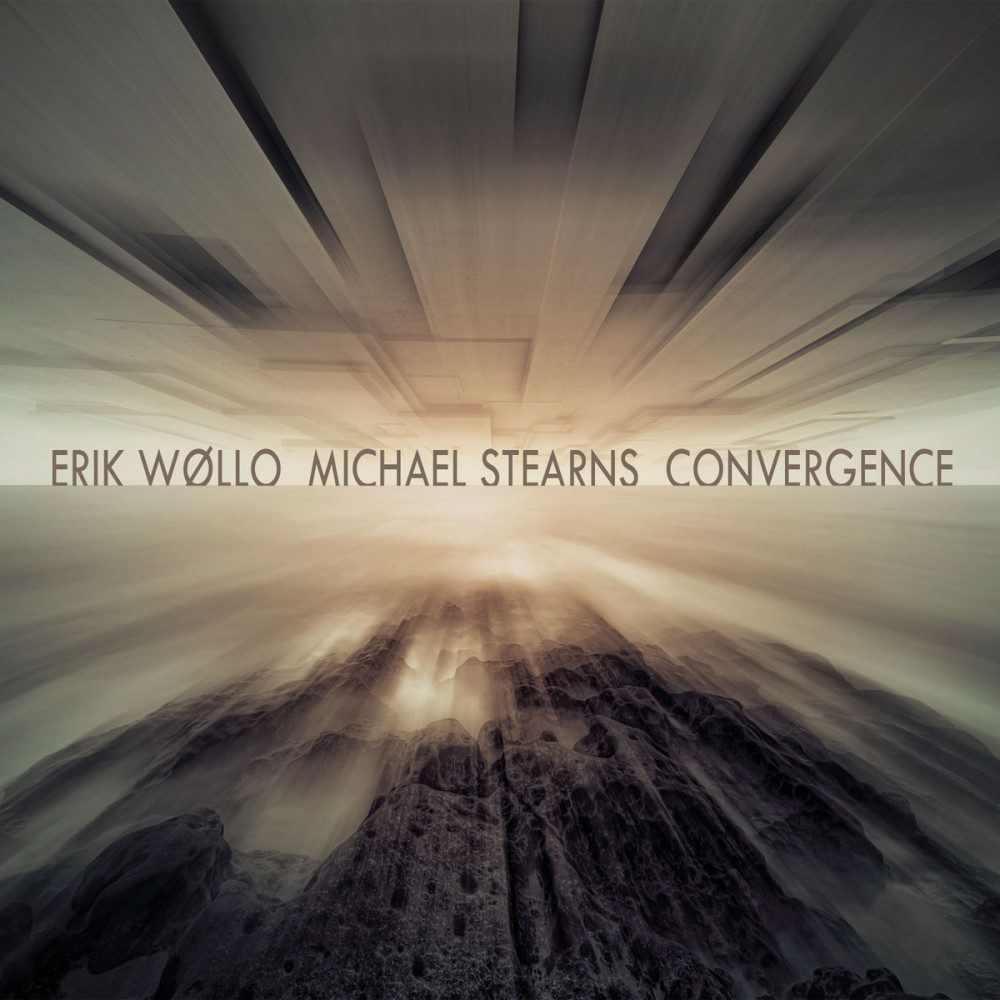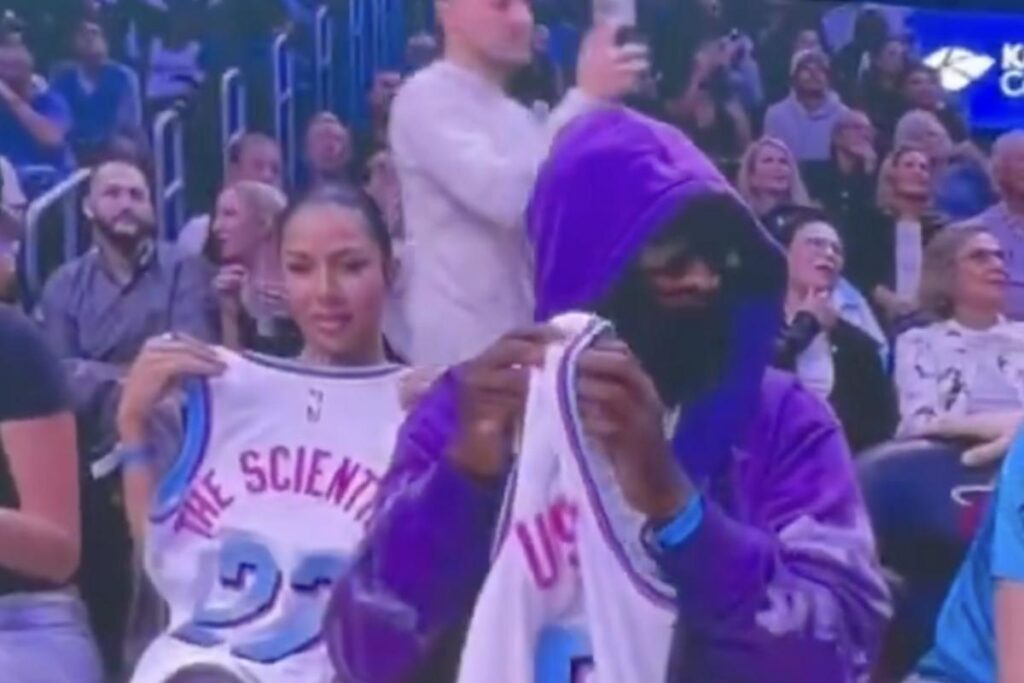Mary Oliver once wrote a simple 3-step list of “Instructions for living a life: / Pay attention. / Be astonished. / Tell about it.” These days, attention is a market commodity, astonishment an algorithmic side effect, and telling about it mostly a means of content creation aimed at monopolizing what little focus remains. By Oliver’s metric, that’s a kind of living death—the erosion of the very faculties that make wonder possible; a life spent looking without really seeing.
Zac Little—the Columbus, Ohio, songwriter who has spent fifteen years orbiting the edges of American folk rock as the leader of Saintseneca—has built his career around that Oliverian discipline: paying attention until a world appears, living in the astonishment that follows, and then telling about it. “Everything already exists, if you really think about it,” Little says over Zoom, his (very impressive) signature red beard catching the sunlight. “It’s just through addressing our attention in different ways that specific possibilities emerge. That is, to me, what creation is: directing your attention at something and recognizing the distinct possibilities brought into being by your own particular lens.”
When Saintseneca’s excellent Pillar of Na landed in 2018, it capped a decade of searching, idiosyncratic work that pushed the boundaries of folk instrumentation and surreal architecture. From the ramshackle collectivity of Dark Arc (2014) to the sharper emotional contours of Such Things (2015) to, finally, the epic mythology of Pillar of Na, Little and his shifting band of collaborators refined a sound that was both mythic and handmade, earnest yet dreamlike. Then: silence. No tour cycle, no implosion, just a slow vanishing, save for a single or two appearing as if from the ether.
“No way,” Little says when I ask if he imagined the gap stretching this long. “I never would have anticipated that.” But what looked like absence from the outside was, in fact, immersion. “To be honest, I was busy the whole time,” he says. “My perspective is a bit warped, because I was just so deep inside working on all of these things, but anyone from the outside must have just been like, ‘Huh, Saintseneca… I guess they just kind of disappeared.’” He laughs, sheepishly.
It wasn’t a disappearance so much as a retreat—and not into stillness either, but into something slower, more tactile. “I just hit a period where I wasn’t feeling creative at all, wasn’t feeling inspired or motivated or anything like that,” he says. The dullness had no clear source, which made it all the harder. How do you combat an absence you can’t locate? “It would have been a lot easier if I had some sort of cause to point to, but there just wasn’t a reason—there still isn’t. If anything, that’s why it was so disorienting.”
Little’s way out wasn’t through writing, but painting. At first, it was mostly the pleasure of a brush on paper, the rhythm of motion without expectation. “It was just enjoying something really simple and just appreciating the feeling of putting ink on a page, to not really have an agenda or the pressure that comes with one,” he says. That practice grew into its own quiet current, culminating in a small hospital exhibition, “an art-in-healthcare kind of thing,” he explains, as he puts it, after a curator who’d long been a Saintseneca fan reached out.
And then, one day, he found a green pen on the ground—an EnerGel, to be specific—and the words began to flow alongside the ink. That’s not to imply there’s some generative magic lying latent in the Pentel corporation’s plastic pens, but rather that, sometimes, paying attention to the right thing at the right time can break a dam. “It’s this basic ass pen,” he laughs, holding it up to the camera. “The funny thing is, like, I would never have bought this because I think it’s kind of ugly?” But something about the green ink and the smoothness of the nib sparked a small reckoning: “It’s a pretty unassuming piece of office supply, but for some reason, it really got me through.”
ONCE LITTLE PICKED UP the pen—literally and metaphorically—he never really put it down again. “Because of that creative impasse I was at for a while, when I actually got to work on this record I wanted to be as open to the flow of wherever it took me as possible,” he says. “In the past, I probably would’ve cut myself off and been like, ‘Okay, yeah, that’s a record. You can stop now.’” By the time he released the single “Wild Violent” in 2022, he thought he was nearly done. “I never anticipated that it would take three more years to finish the whole thing,” he grins. “So it wasn’t even like, ‘Oh, I laid it down for a couple of years.’ I was literally in it for almost the whole time, obsessing. I really went real, real deep down the rabbit hole, and it took a while to come back up.”
It’s a fitting metaphor for the record that emerged. Highwalllow & Supermoon Songs feels like Little resurfacing from some other dimension—one of those rabbit holes that, like in Alice in Wonderland, dropped him through the mirror into a world that was recognizably his own, only warped and refracted. Except in his telling, that portal looks less like a tunnel and more like the Narnian wood between the worlds: an album of pools, each rippling open into its own reality. “Honestly, I don’t think I’ve read Narnia since I was in grade school,” he laughs. “But, for some reason, there’s this specific image I remember from when I read it as a kid —that quiet, surreal landscape with pools to different worlds—and I think that’s kind of the way it feels.” Perhaps, though, the universes those pools lead to are those of Haruki Murakami’s novels, all of which Little read in the interim between albums. “There are all of these subterranean worlds in his books,” he says. “And in working on the album, I felt like I was in a lot of those underworlds a little bit. The music felt like it was coming from a similar place.”
If Highwalllow is a world built from thresholds, then its physics are surrealist: ordinary objects behaving just slightly wrong, dream logic bending around daylight. “I think a lot about surrealism and Salvador Dalí,” Little explains. “It’s maybe more of an inspiration in the way I approach music than visual art: having these realistic or naturalistic images, but then subverting that in some ways—taking it to a dreamy or surreal place.” He pauses, searching for the right register. “If I’m producing a song, I always want to base it in a place where it feels natural and intimate, but then you start to look around and realize you’re in a dream world.”
That tension—between groundedness and drift; recognition and estrangement—runs through the record. And while surrealism guides its defamiliarizing tilt, so does Little’s relationship to genre and place. He grew up “in a really rural area of a kind of Appalachian part of Ohio,” immersed in country and church music. For years he rejected it, then came back to it with new ears: “You get older and hear it fresh and you’re just like, ‘Oh, actually this song is incredible.’” Still, it took time for him to feel comfortable embracing those forms in his own work. “There are a few songs on this record, like ‘Green Ink Pen’ or ‘Hot Water Song,’ that I honestly would not have let myself write in the past—I’d be like, ‘Oh, it’s too country, it’s too traditional; I need to make it more weird.’ But so much of this album was about not stopping myself, and paying attention to what the songs wanted to do, rather than what I wanted them to.”
The result is what Little calls “Un-Americana”: both an ode to traditional folk and a critique of its hollow clichés—the kind that crop up “when people just throw on a cowboy hat and do this trope-y, cartoon-y thing.” For him, the comfort of nostalgia can too easily become confinement. “There’s an element of it that feels comforting and nostalgic, maybe; people buy into it because it feels safe. So I wanted to make something that inhabited some of those traditional forms while still critiquing and challenging them.”
While all of Saintseneca’s records have wrestled with that same tension—between sincerity and strangeness—none have pursued it as far as Highwallow & Supermoon Songs. The album unfolds like a mapped dream: a 15-song landscape orbited by two “moons,” Viridian (a five-song suite) and Cinnamon (the final six songs). There’s a geography to it, a cosmology, even a numerology. “The number five was my magic number for this record,” he says, recalling how Pillar of Na revolved around threes. “That’s why I also wanted to have 21 tracks on the record, because it fits within the golden ratio sequence.”
The scaffolding isn’t self-indulgent—it’s structural, a way to “ignite this creative machine by giving yourself a few rules, then just hopping aboard and seeing where it takes you.” They’re less restrictions than coordinates, methods for charting unfamiliar terrain. Similarly, each moon carries its own hue and gravity. “The way I would describe the feeling of each is, like… the Viridian Moon songs felt green,” Little laughs. “And the Cinnamon Moon, they just felt orange.” Little has synesthesia, so as a result, those colors became emotional coordinates rather than visual motifs—ways of navigating the record’s internal map rather than boundaries limiting the cartographer’s scope. “I spent years just testing out different shades,” he says, rummaging for his homemade color chart. When he finds it, he holds it up: a yellow sheet of construction paper covered with nearly two hundred squares of green, teal, orange, and magenta. “This is just not even scraping the surface,” he smiles, shaking his head. “I got a little obsessive about it.”
When I ask if that obsessiveness is a blessing or a curse, he doesn’t hesitate. “Both,” he says, then laughs. I’m gonna obsess no matter what; it just is what it is. So it’s like… If I’m obsessing either way, then I’d rather it be on a song, as opposed to some dark, toxic thing.”
Little’s obsessiveness wasn’t the kind that calcifies into control, but a way of staying alert to what the work itself wanted to be—attention as endurance. “My strongest compass,” he tells me, “is just intuition. I try to provide deference and space to that. It feels right, and I need to follow that, even when another part of my brain wants to intellectualize it or justify it.” That discipline—the patient watching, the willingness to wait for surprise—animates the record’s sound as much as its structure. Highwallow opens its doors to the incidental and the accidental: birdcalls caught mid-take, dogs jingling “right on the beat,” the hum of a house bleeding into the mix. “There’s a lot of bird sounds throughout the record,” he says, almost proudly. On one track, he and longtime collaborator Steve Ciolek (of Sidekicks and superviolet fame) built a miniature avian triptych, progressing linearly from the analog to the digital: a field recording, a toy bird whistle, then a “synthesized computer bird.” Natural sound gives way to imitation, then abstraction. It’s not just ornamentation; it’s a warping of perception, a reminder of how attention filters the real into the unreal and back again.
That slippage between organic and artificial, spirit and mechanism, culminates on “Bitter Suite,” the record’s most disquieting passage. Portions of its second half are all fuzzed-out electric riffs and haunting drones, almost unrecognizable as a Saintseneca song. “I cloned my voice with A.I.,” Little tells me. “It sounds like my voice, but you can just kind of feel intuitively that something’s not quite right.” He wanted that uncanny shiver—the familiar rendered strange, sincerity made suspect. But then, the machinery gives way to something profoundly human: the rhythmic pulse of his daughter’s heartbeat in utero, recorded during prenatal visits. “I liked the idea of being engulfed by this overwhelming, sinister wash of uncanny-valley-esque sound, then breaking into something that’s maybe more quietly hopeful.” The song collapses the distance between terror and tenderness, between a body becoming a parent and a voice becoming its own echo. What might have been a technical experiment turns devotional—a study in what survives distortion. The answer, of course, is humanity itself: a heartbeat, recorded in real time in the doctor’s office.
IT’S AN ODD TIME to be an artist, a parent—and by odd, I mostly mean fucking hard. There is, as Little puts it, just so much “chaos and destruction, and more and more people who seem hell-bent on accelerating that.” How do you bring something, someone, that you love so much into a world that you know will seek to harm them? “That’s kind of what I was marinating in during this album, in some ways,” he says. “It’s so scary to feel responsible for a whole person, to try to guide them through this world that can be so threatening and dangerous. It feels like we’re living in this moment where you can be pretty confident that the life of the next generation, my daughter‘s life, is going to be harder than your own, my own. I don’t know if my parents ever really felt that way, if generations ago people felt that way. It’s just a hard pill to swallow.”
He pauses. “But at the same time, life is so full of overwhelming beauty and joy, love, and relationships and hope. So it’s not all doom and gloom. There’s so much to be grateful for and appreciate—but that doesn’t mean there isn’t fear. It’s this dynamic tension between those two things.” Sitting in those prenatal appointments, listening for that faint pulse, became a microcosm of that tension. Little pulls Galway Kinnell’s The Book of Nightmares from his bookshelf, the long-form poem that fuses birth, love, and brutality in equal measure. “To me, ‘Bitter Suite’ is this book,” he says. “There’s something really harrowing about anticipating the birth of your child, but it’s also so amazing and profound, and Kinnell just captures the overwhelming intensity of that darkness and that beauty so well.”
Highwallow & Supermoon Songs helped Little find a home within that same contradiction—a world between worlds, a landscape between moons. “It felt like a very visual experience. It really felt like I was in this liminal, in-between space. I could almost see it, you know?” he says. The language he uses to describe the record’s geography suggests less a design he imposed than a constellation that revealed itself. “For a long time I wasn’t sure who [as in, which song] was on the moon and who’s on the world,” he says. “It was a process of finding that. I saw it as all of these songs being in this constellation, pulling and creating tension on one another, so it was really just a matter of trying to listen to that instead of assigning or prescribing my own manipulation onto it.” The songs didn’t fall into place so much as they settled, like sediment responding to invisible tides.
Those instincts—to let a thing reveal its own logic through prolonged looking, to let attention rather than ambition guide the process—became the quiet principles of Highwallow & Supermoon Songs. It’s no wonder Little cites Mary Oliver as a key influence; he read her poetry constantly throughout the album’s creation (“She is a wizard,” he laughs). There isn’t a word on the record that escaped his attention: the lyrics are rife with homonymic play and double meanings, often repeating lines with small deviations that force listeners to listen closely themselves, to notice how a shift in syntax refracts meaning.
“I’m just kind of a huge language nerd,” he admits, laughing sheepishly. “I’m collecting words all the time as I’m reading—I keep a little notebook on my desk where I just collect little things from other people’s work. It’s part of my everyday ritual.” That is, after all, how you create works of art from language when, as Little put it earlier, “everything already exists.” In some senses, all art is inherently found art. “That’s where you get the pieces, the parts. They come in and you metabolize them and it just filters back out through your own process,” he says. “That’s the beauty of it—you can make something complex where the same words fully just mean, like, three things simultaneously that can all also contradict. I mean, that’s what so many of our experiences are like, just in living, so really, that’s kind of what I’m after in writing too.”
Throughout the record, he spins old idioms into new iterations (“Not all who launder are washed”), titles songs after layered homonyms (“Bitter Suite,” “Non Prophet”), and subtly rearranges lines to create semantic echo chambers (“In the window is the way of / Witnessing the lightning / Is the window in the way of / The lightning striking?”). Little raves about the poet James Merrill for his linguistic precision: “You can just tell that he loves language.” The same is true of Little himself—his love for words is tactile, almost sculptural, and he writes in ways that make the listener as attentive as the artist
The same ethic—making the act of listening itself mean something—extends to how the record is being released.. A full third of it, the Cinnamon Moon suite, will not appear on major streaming platforms. The choice was deliberate, though not without ambivalence. Little thinks in terms of experience, not distribution. In explaining it, he tells a story about a personal glitch in his copy of The White Album: a burned disc that skipped “Long, Long, Long,” leaving him unaware of the quiet salve that follows the wildness of “Helter Skelter.” Hearing the official version years later, with “Long Long Long” finally included, “opened up this entire new dimension of the album.” Formats, he argues, are “somewhat arbitrary products [that] can obscure a more fundamental or spiritual dimension of engaging with someone’s art.”
In the end, he’s not withholding so much as inviting. If you connect with the world of Highwallow, you can step off the algorithmic path and keep going—onto that second moon, into a different gravity. “It was really important for me for the Cinnamon Moon to also feel really rewarding,” he says. “Not just B-sides, not just random throwaway stuff; a full part of the album.” The point isn’t scarcity—it’s attention. A bet that listening with intention still matters in a world that insists otherwise. But Highwalllow never feels didactic, like a lesson to be learned. It’s a landscape, after all, and landscapes don’t resolve so much as they accrue. You attend to them, live inside their weather, watch the grass grow. That’s why the glitches matter (the toy whistle and the phone-field bird, the cloned voice and the fetal Doppler), not as stunts but as shifts in perception.
The record closes not with triumph but with tenderness. On “Vanishing Point,” Little sings: ““Let ’em sing it if it can’t be said / Let ’em dance if it can’t be song. / Come back to me, little song to sing. / Come back to me.” The song collapses prayer, art, and address into the same breath—a plea not for permanence, but for return. A benediction for what can’t be held, only called back. If the album begins in retreat, it ends in release—the high wall lowered, the self reabsorbed into the living world it once observed. What remains is what Oliver has always asked of us: attention, astonishment, and the act of telling. “Come back to me,” Little sings. Maybe it does, maybe it doesn’t. It doesn’t particularly matter. The point is in the act itself: the witnessing, the wonder, and the words.
Casey Epstein-Gross is Assistant Music Editor at Paste and is based in New York City. Follow her on X (@epsteingross) or email her at [email protected].




